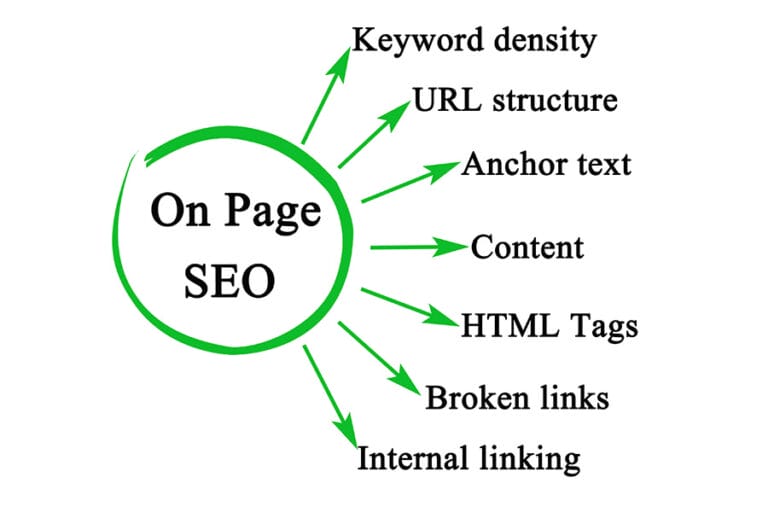
The Ultimate Guide to Non-Technical On-Page SEO Strategies
Optimizing on-page SEO is crucial, even if you aren’t a technical wizard. While backend and technical intricacies might be best left to the experts, there’s plenty you can do to enhance your site’s on-page SEO.
This guide will illuminate how you can refine your blog posts to stay a cut above your competition. Whether you’re producing new content or revamping old ones, these strategies will prove invaluable. So, let’s delve in!
Making Content Easily Digestible
In today’s rapid-paced digital world, attention spans are dwindling, largely due to platforms like TikTok. To rank well, capturing and retaining your reader’s attention is paramount.
The Power of Scannability
To cater to modern users, your content must be scannable. A monolithic 1500-word chunk without structure will deter readers. Instead, embrace structure via headings and subheadings. Not only do they make content digestible, but they also enhance the reader’s experience and aid SEO.
How Headings Boost SEO
Headings anchor readers, ensuring they don’t drift off. Many visit your post hunting for specific insights. If they struggle to locate it, they’ll likely leave, hiking up your site’s bounce rate and jeopardizing your SERP standing.
Moreover, headings signal search engines about your content’s core topics. As a result, they’re prime spots for your keywords.
Structuring for SEO Success
When drafting posts:
- Use H1 for the title
- H2 for main headings
- H3 for subheadings
- H4 for any subsequent subheadings
Ensure no text block exceeds 300 words. Craft compelling headlines that resonate with readers. Specificity works wonders, and numerical data can be a strong hook.
Steer the reader’s journey with purposeful headings. Why are they here? What’s in it for them? Address these queries with sections like:
“Proven Strategies to Fortify Your Password Security”
Sprinkle target keywords within headings, especially H2s, to align your content with search engine expectations.
Strengthen SEO Through Internal Links
Internal links are navigational aids that guide readers and search engines across your site. By interlinking core pages, you highlight their importance to search engines.
Prioritize and link from your most significant pages to others. Pages receiving numerous internal links gain authority, enhancing their search engine stature.
When embedding internal links, use anchor text shrewdly. Infuse keywords or pertinent terms into your anchor text. However, maintain variety to sidestep Google’s penalty for keyword stuffing.
Crafting Engaging, Value-Rich Content
The SEO landscape has evolved. Once, keyword stuffing was a shortcut to high SERP ranks. Now, genuine value reigns supreme. To make a mark, your content must resonate with readers, addressing their concerns and quenching their thirst for knowledge.
To craft compelling content:
- Focus on addressing user queries and concerns.
- Seek inspiration from audience questions or issues they’ve shared previously.
- Explore platforms like Reddit or Quora for insights into what your audience seeks.
- Optimal Content Strategy:
- Develop a content strategy that aligns with user intent and includes keyword research, topic relevance, and content freshness.
- Title Tag Optimization:
- Craft unique and descriptive title tags that incorporate target keywords naturally, aiming for a length of 50-60 characters to ensure full visibility in SERPs.
- Meta Description Mastery:
- Write compelling meta descriptions that act as organic ad copy to improve click-through rates, including relevant keywords and a clear call-to-action.
- URL Structure:
- Use SEO-friendly, concise URLs, include target keywords, and follow a logical hierarchy.
- Heading Tags:
- Utilize H1 to H6 tags to structure content effectively, with the primary keyword in the H1 and related keywords in subheadings.
- Engaging Multimedia:
- Incorporate relevant images, videos, infographics, and other multimedia elements to enrich the user experience and increase time on page.
- Internal Linking:
- Implement a strategic internal linking structure to help distribute page authority throughout your site and enhance user navigation.
- External Linking:
- Link out to authoritative and relevant external sources to provide additional value to users and build trust with search engines.
- Mobile Responsiveness:
- Ensure your site is fully responsive and offers a seamless user experience across all devices, considering the mobile-first index.
- Page Load Speed:
- Optimize page load times by compressing images, leveraging browser caching, and minimizing redirects to improve user experience and SERP rankings.
- Schema Markup:
- Implement structured data using Schema markup to help search engines understand and display your content in rich snippets.
- Social Sharing Elements:
- Integrate social sharing buttons and Open Graph tags to encourage content distribution on social media platforms and increase visibility.
Each of these strategies, while non-technical, requires a keen understanding of both your audience and the best practices of current SEO. Executed correctly, they can contribute significantly to your site’s organic search performance without delving into the more technical aspects of SEO.
The post Guide to Non-Technical On-Page SEO Strategies appeared first on PCM AGENCY.